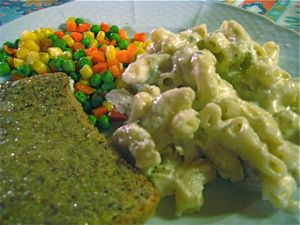 Recently, making the rounds in my newsreader, I stumbled on a post to the Baker's Banter blog about making your own granola bars. P.J. Hamel often blogs about the cost-savings inherent in baking yourself, and here she brought up the conflict found in many households over whether that truly makes for the superior product.
Recently, making the rounds in my newsreader, I stumbled on a post to the Baker's Banter blog about making your own granola bars. P.J. Hamel often blogs about the cost-savings inherent in baking yourself, and here she brought up the conflict found in many households over whether that truly makes for the superior product.For many people, apparently especially those who grew up in the golden age of packaged foods, store-bought convenience items are the sign of success. If you can afford to buy squishy loaves of Wonder bread regularly, then you've made it. Homemade bread, no matter what it's taste or texture, becomes ultimately inferior because of its association with pinching pennies.
It's true that today home baking is still associated with frugality. Personal-finance blog The Simple Dollar outlines the process for making homemade sandwich bread, and the Hillbilly Housewife site shows you how to save through making tortillas from scratch, without even a fancy press.
And no doubt having someone else prepare your food for you, whether it's the Campbell Soup Company canning chicken noodle or a classy restaurant offering consommé, smacks of elegance and prosperity. When you can shell out for Whole Foods takeout every night, it must make you feel like you've reached a comfortable perch in life.
At the same time, I do think there's been a generational shift at work in the perception of homemade foods. Thanks to food television, glossy cooking magazines, and food blogs, the homemade has taken on a new, high-class sheen. Suddenly, homemade is not only cheap and wholesome, it's trendy, eco-conscious, and the choice of the (relatively) wealthy.
Even people who can't cook or bake seem to favor whatever prepared foods hew closest to homemade these days, opting for local bakers and vendors who claim to make their products from scratch (or near to it) on site.
Why has homemade become hot, then? How did it shake off its embarrassing connotations for so many people for whom Pepperidge Farm and Tastykake set the standard?
You could argue health-consciousness turned the tide. Certainly, the buzz in the media and blogosphere has tended toward promoting the wholesome over the high-fructose corn syrup. Organics have grown in popularity, as has the addition of fiber to processed foods. Still, obesity and poor exercise habits remain epidemic despite the rise of the from-scratch crowd.
Homemade perhaps has lost its dowdiness instead because it's now perceived as a time-based luxury. Most of us feel like we have no free time these days, and thus an activity that requires a time investment, such as baking your own bread, looks indulgent compared to tearing into a slice straight from the pricier Sara Lee bag. Time, not money, has grown in value since the heyday of convenience foods.
I've learned this past year while in Europe, though, that homemade doesn't have to mean lots of time investment. Meal planning helps me keep the time I have to devote to making dinners from scratch to a minimum. When you consider the time necessary to heat up a prepared meal (some microwave dinners require 14 minutes of cook time!) or to get food at a restaurant (consider how long you sit waiting for service!), those "convenient" options don't offer a huge savings.
Meal planning, on the other hand, saves money and time while helping keep you on the now-popular "from-scratch" path. Because it expedites getting that homemade food on the table, you and your family can feel like you're indulging in the luxury of time well spent or like you're relishing the frugality of money saved as you please!
Photo: Colleen Fischer
Technorati Tags:
food, meal planning, homemade



No comments:
Post a Comment